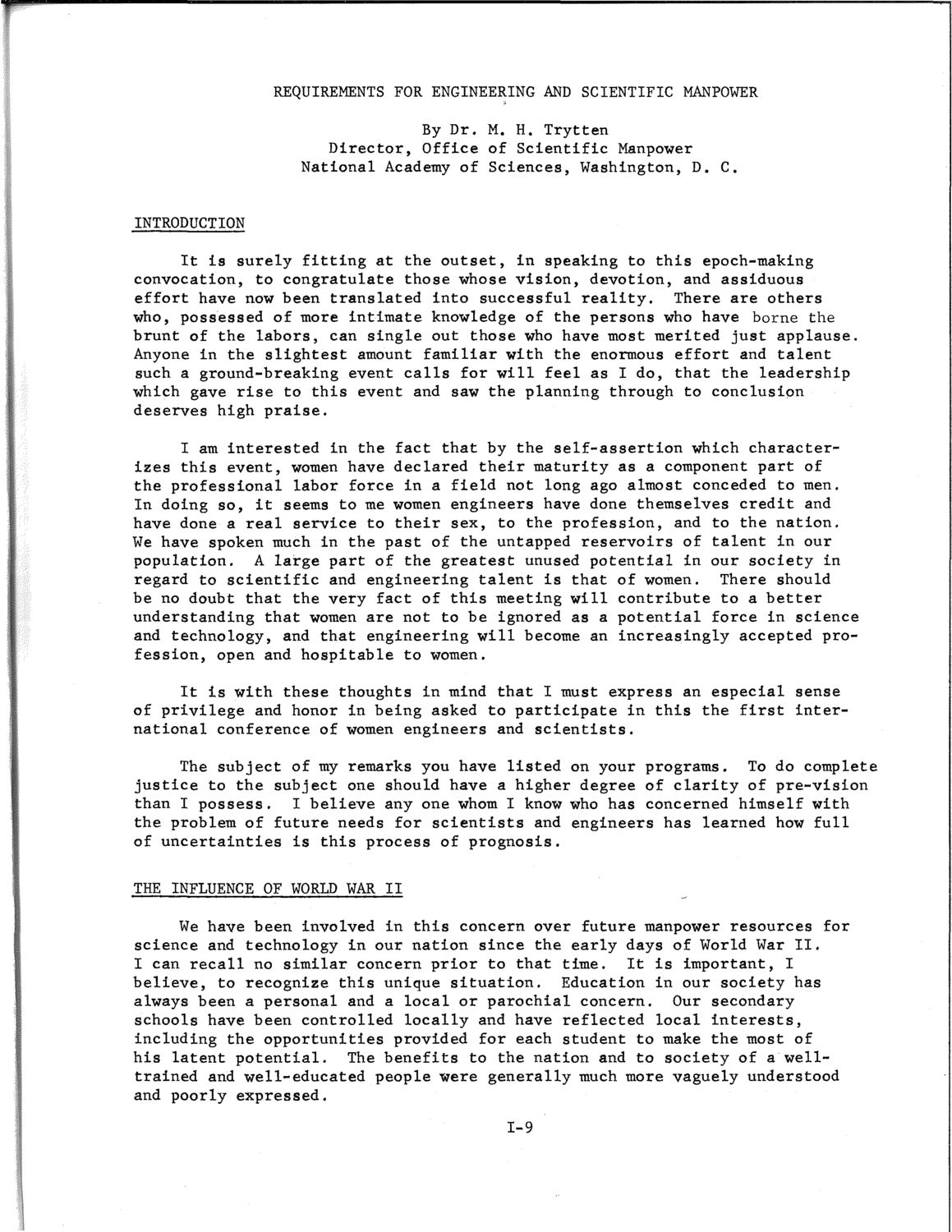| |
| |
Caption: SWE - Proceedings of the First International Conference of Women Engineers and Scientists
This is a reduced-resolution page image for fast online browsing.

EXTRACTED TEXT FROM PAGE:
REQUIREMENTS FOR ENGINEERING AND SCIENTIFIC MANPOWER By Dr. M. H. Trytten Director, Office of Scientific Manpower National Academy of Sciences, Washington, D. C. INTRODUCTION It is surely fitting at the outset, in speaking to this epoch-making convocation, to congratulate those whose vision, devotion, and assiduous effort have now been translated into successful reality. There are others who, possessed of more intimate knowledge of the persons who have borne the brunt of the labors, can single out those who have most merited just applause. Anyone in the slightest amount familiar with the enormous effort and talent such a ground-breaking event calls for will feel as I do, that the leadership which gave rise to this event and saw the planning through to conclusion deserves high praise. I am interested in the fact that by the self-assertion which characterizes this event, women have declared their maturity as a component part of the professional labor force in a field not long ago almost conceded to men. In doing so, it seems to me women engineers have done themselves credit and have done a real service to their sex, to the profession, and to the nation. We have spoken much in the past of the untapped reservoirs of talent in our population. A large part of the greatest unused potential in our society in regard to scientific and engineering talent is that of women. There should be no doubt that the very fact of this meeting will contribute to a better understanding that women are not to be ignored as a potential force in science and technology, and that engineering will become an increasingly accepted profession, open and hospitable to women. It is with these thoughts in mind that I must express an especial sense of privilege and honor in being asked to participate in this the first international conference of women engineers and scientists. The subject of my remarks you have listed on your programs. To do complete justice to the subject one should have a higher degree of clarity of pre-vision than I possess. I believe any one whom I know who has concerned himself with the problem of future needs for scientists and engineers has learned how full of uncertainties is this process of prognosis. THE INFLUENCE OF WORLD WAR II We have been involved in this concern over future manpower resources for science and technology in our nation since the early days of World War II. I can recall no similar concern prior to that time. It is important, I believe, to recognize this unique situation. Education in our society has always been a personal and a local or parochial concern. Our secondary schools have been controlled locally and have reflected local interests, including the opportunities provided for each student to make the most of his latent potential. The benefits to the nation and to society of a welltrained and well-educated people were generally much more vaguely understood and poorly expressed. 1-9
| |